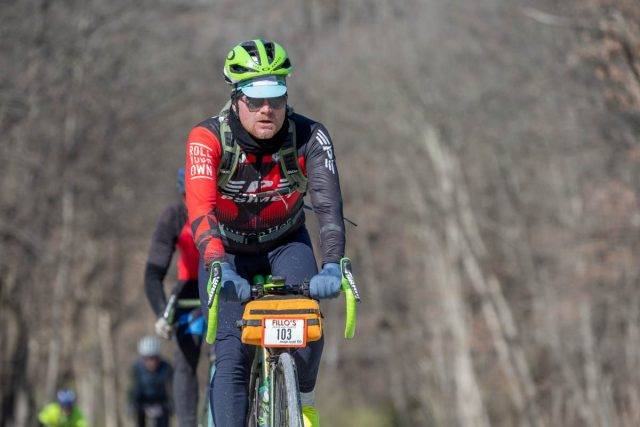
One race stands apart for riders in Chicagoland looking to scratch their early-season itch for gravel. Say hello to the Rough Road 100 Spring Classic, an oddball combination of a road race and gravel grinder.
Put on by Craig Patnode with the help of a team including his brother Brett, this Morris, Illinois race is located an hour west of Chicago and features surrounding community highlights. This distinctive spring classic has found a following among Chicagoland’s gravel community for anyone looking to scratch an itch for early-season miles on mixed terrain.
While the exact percentage of gravel versus road the race features is debated among diehard competitors, road riding outweighs gravel for this race. As a result, riders have taken advantage by putting the widest slicks they can fit on their road bikes and going full speed ahead whenever and wherever possible.
This year, I left the gravel bike home and equipped my 2017 Cannondale Evo Hi-Mod with the most bomb-proof aluminum wheels I own, a pair of DT-Swiss R460s with Bitex Hubs. I found out fast that I would be limited to mismatched tires with a 32mm Bontrager R1 tire in the front and a 28mm Vittoria Zaffiro Pro Graphene 2.0 (winter-road) tire equipped on my rear wheel, all complemented by a 28-geared cassette.
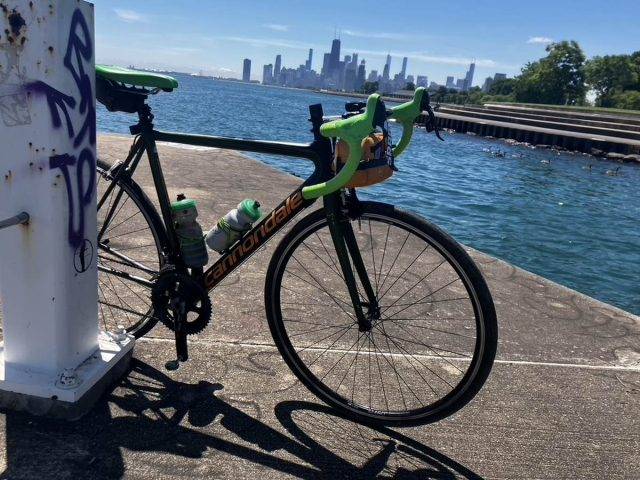
On race day, the weather would be a minor obstacle compared to the crazy wind I experienced the year before. Cooler early April air, combined with days of rain, made for a colder morning that promised to warm up gradually. One signature of Rough Road 100 is the event’s opening sprint. In the past, I had quickly lost pace with a relentless opening that only seemed to relax once the initial gravel sectors showed up.
A fast opening bell with packed riders started with a minor crash I somehow managed to avoid. This lead sprint went into a sharp right-hand turn and an incline that did nothing to slow down a very fast-moving peloton. In the few moments I did look down at my GPS, I was registering 25-30 MPH and doing whatever I could to find a draft, a familiar pace, or a friend to catch the draft of.
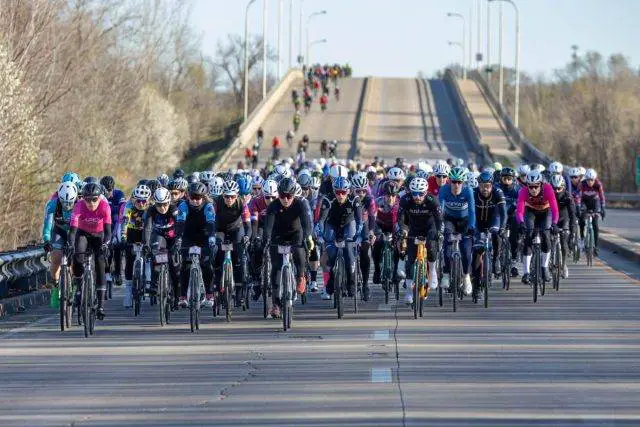
For an instant, I did lock onto the familiar wheel of my brother, who somehow managed to make it to my portion despite starting in the 40-mile wave. I looked down at my GPS and saw I was cooking at about 24 mph, and by the time I looked up, he had disappeared.
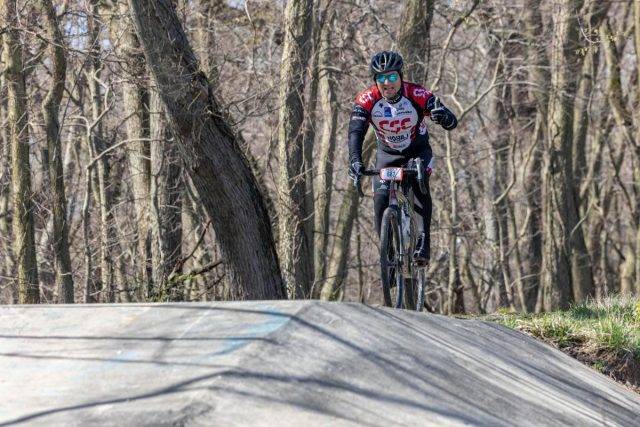
As the course entered the first section of gravel, the main obstacles, beyond the (more than) occasional pothole, included several water bottles, saddle bags, and even sunglasses, all compliments of the main pack of riders sprinting ahead of me at full gas. As the group began to separate, I caught the wheel of a few teammates, which required me to light more than one match just to stay afloat at a brutal pace.
As the race advanced into a forested gravel patch, there was a sudden stoppage ahead of me. The front peloton was following a narrow formation to the right, that was just out of sight. I assumed a rider was down and slowed, only to find that half a tree had fallen the day before, causing a literal log jam thanks to a downed tree. I took a moment to catch my breath, drink some water, and push ahead.
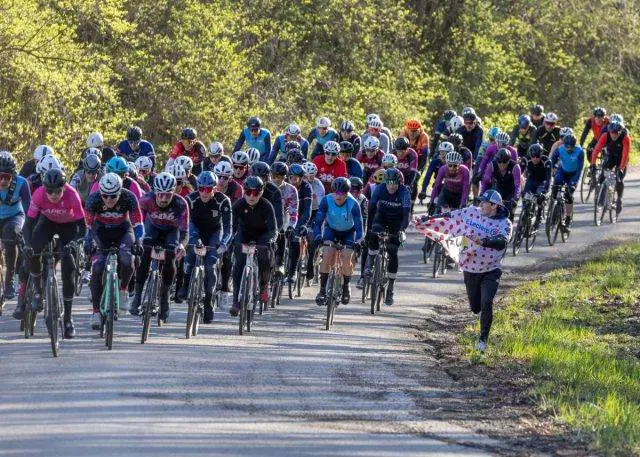
As the group entered chunkier gravel and some single-lined truck roads, I fell back into another pack of familiar riders, finding the least chunky gravel lines I could and taking moments to draft and fight the wind. I quickly approached the biggest intersection of the race, where it splits between the 42-mile and 62 distance, and I realized there was no turning back. It was now or never if I wanted to take on this entire course. I kept my hands around my drops, pushing past the split and back onto the gravel.
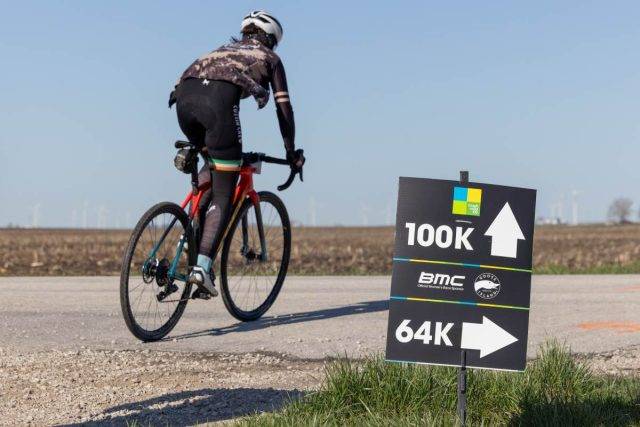
Shortly after the course split, I looked across a field of towering spinning windmills and was reminded that the wind was still present this year. A gradual incline and persistent gravel without the freedom of treads started to wear me down. At this stage, between gravel sectors, asphalt roads served as an oasis and a moment to rest my cramping legs.
The problem I encountered was as soon as I felt remotely recovered, another gravel sector greeted me. This repeated pulverization around mile 40 was a brutal test of endurance. The opening sprint had burned plenty of matches, but I was confident that if I could get past the lingering pain, I would be able to finish this race.
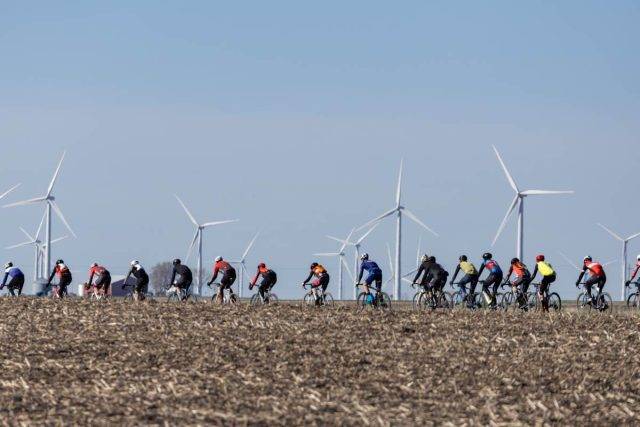
The course would continue on rolling asphalt avenues across residential areas, cul-de-sacs, and a scenic downtown. After this brief reprieve, the two significant climbs of Rough Road awaited. While the hills felt manageable compared to other gravel events of the past, I realized I was massively under-geared and had to get out of the saddle to push through.
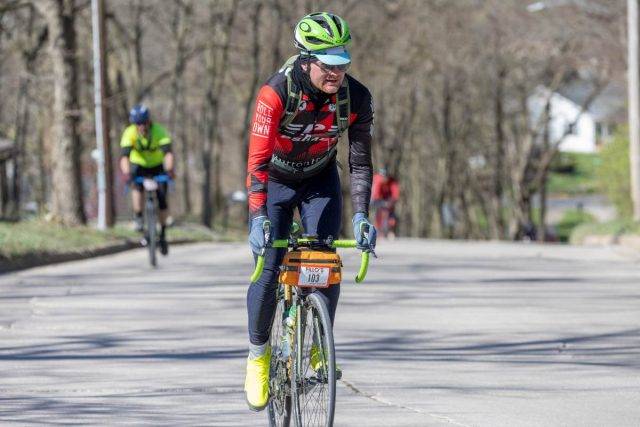
After a few miles of winding roads to the race, I entered a forested dirt path adjacent to the Illinois River. Recent rainfall made finding a good line to ride essential to avoid spinning out and dodging the more than occasional stray branch. Occasionally, I took a moment to admire the symphony of frogs and nature I was surrounded by as I tried to ignore the lingering cramping in my legs.
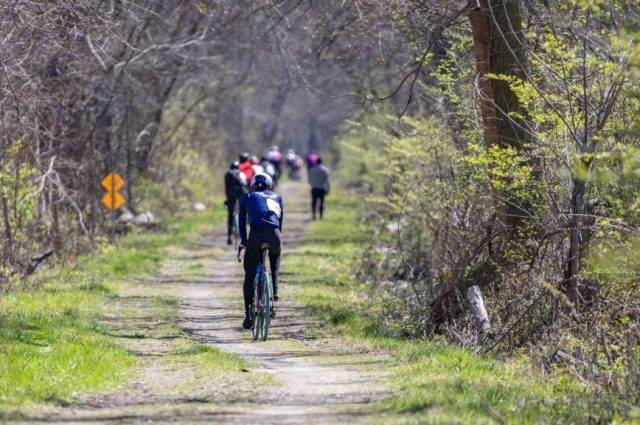
As the race neared the finish, I stayed tightly packed with a group of familiar riders while tactically planning my sprint. This was when the course threw one last element of surprise: a new cyclocross-inspired grass sector to power through. This unexpected element tested my bike handling until opening up into a short asphalt finish.
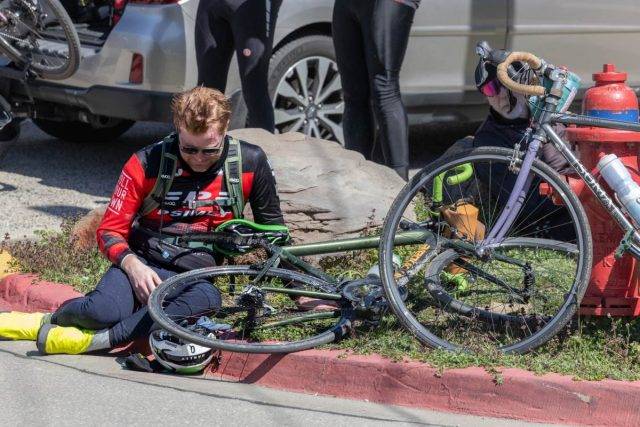
I walked away from the rough road eager to dig into my data, and to my surprise, I hit many all-time milestones, according to Strava. While my average wasn’t quite where I wanted it, I’m eager to take on this distance again, and I’m in awe of what the organizers accomplish each year in the humble town of Morris, Illinois. Every rider seemed to share a similar story of an epic sprint, an equally epic test of physical endurance afterward, and an eagerness for all the races ahead now that it was finally getting nice enough to ride outside again.
Many thanks to Peter for his submission!

